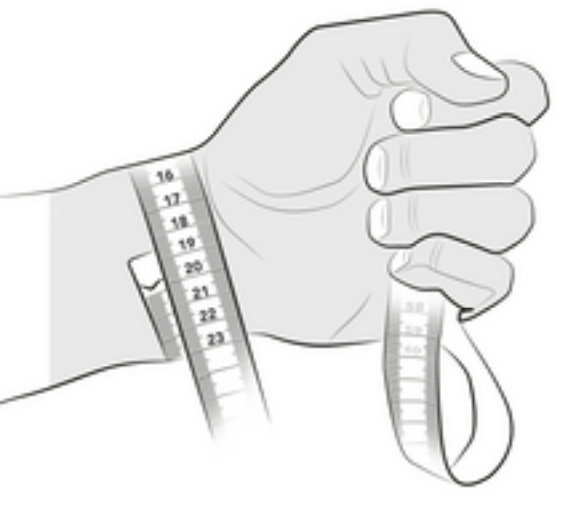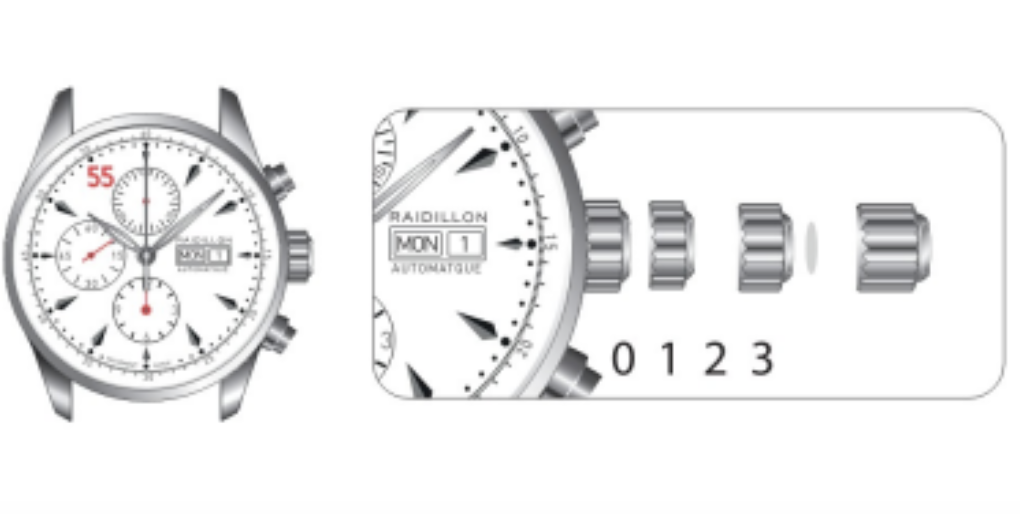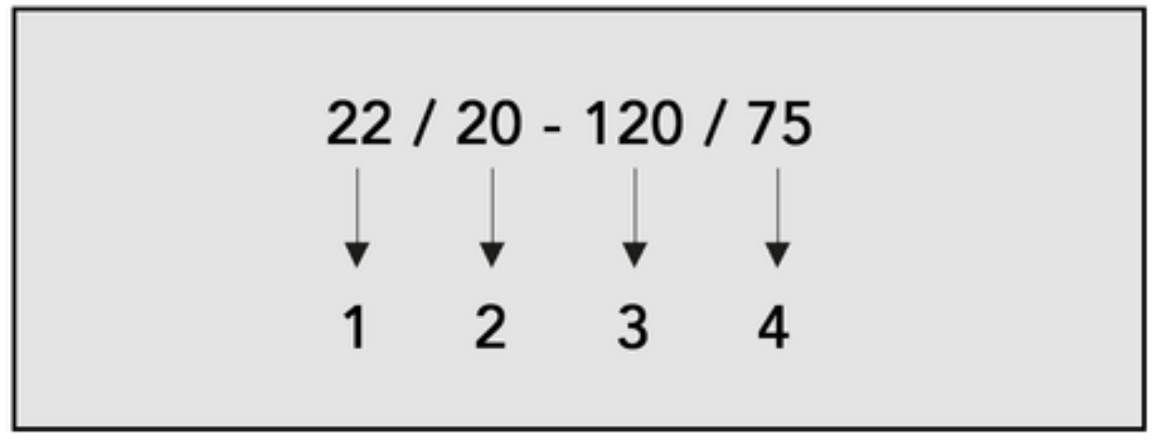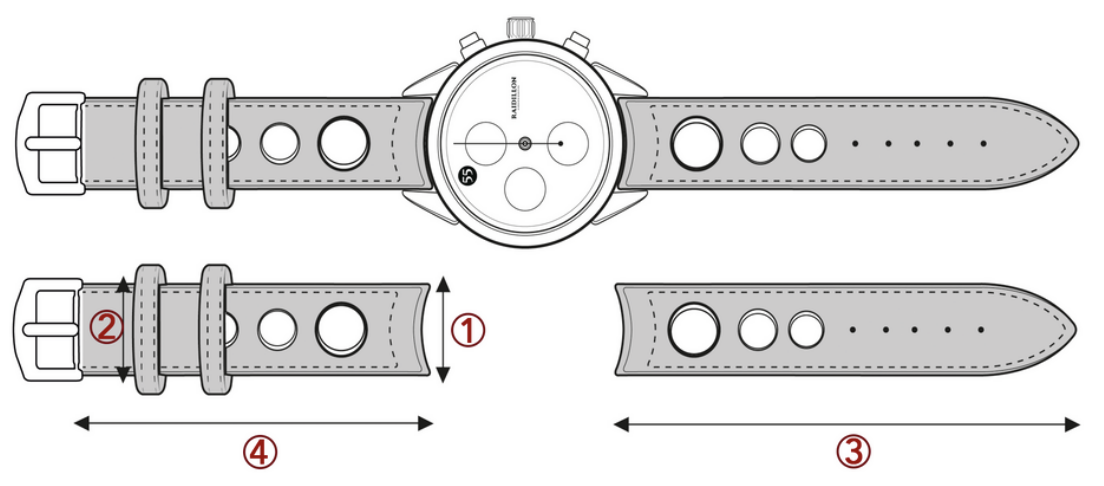It is important never to change the date between 9 p.m. and 3 a.m., as this could damage the mechanism. Automatic watches require manual winding after a long period of inactivity.
Take a great start with your Raidillon.
1. Take a ruler to measure your wrist size

2. Look in the table below for the corresponding strap size.
Wrist Size | Raidillon Strap Size |
mm : 140-155 - inches : 5.5 - 6.1 " | 105 / 70 |
mm : 155 - 175 - inches : 6.1 - 6.9 " | 120 / 75 |
mm : 175 - 190 - inches : 6.9 - 7.5 " | 130 / 88 |
1. Open the clasp on your Raidillon watch by simultaneously pressing the 2 push-pieces on either side of the buckle.

2. Unfold the buckle to widen the strap and remove the watch from your wrist.


There are 4 different positions for the crown:
Position 0: screw-down crown
Position 1: for manual winding of the watch
Position 2: for day/date setting
Position 3: for hour/minute setting
To carry out an operation, it is always necessary to unscrew the crown (by turning it downwards) and, to ensure that it is water-resistant, to screw it back in once you have finished using it (press towards the case while turning the crown upwards).
Winding is done in the 1st position (unscrew the crown, see diagram above) by holding the crown between the thumb and forefinger and turning it towards the noon position of the dial (turning it the other way round will have no effect on the movement).
It is generally accepted that about thirty turns of the crown are needed to wind a watch. There is no risk of winding the watch too much: a system called a sliding clamp prevents the barrel spring from being blocked, at the risk of breaking a part of the mechanism.
It is important never to change the date between 9 p.m. and 3 a.m., as this could damage the mechanism.
Automatic watches require manual winding after a long period of inactivity.
1. Take a ruler to measure your wrist size.

2. Look in the table below for the corresponding strap size.
Wrist Size | Raidillon Strap size |
| 105 / 70 |
| 120 / 75 |
| 130 / 88 |



There are 4 different positions for the crown:
Position 0 screw-down crown
Position 1 for manual winding of the watch
Position 2 for day/date setting
Position 3 for hour/minute setting
To carry out an operation, it is always necessary to unscrew the crown (by turning it downwards) and, to ensure that it is water-resistant, to screw it back in once you have finished using it (press towards the case while turning the crown upwards).
Winding is done in the 1st position (unscrew the crown, see diagram above) by holding the crown between the thumb and forefinger and turning it towards the noon position of the dial (turning it the other way round will have no effect on the movement).
It is generally accepted that about thirty turns of the crown are needed to wind a watch. There is no risk of winding the watch too much: a system called a sliding clamp prevents the barrel spring from being blocked, at the risk of breaking a part of the mechanism.
It is important never to change the date between 9 p.m. and 3 a.m., as this could damage the mechanism. Automatic watches require manual winding after a long period of inactivity.